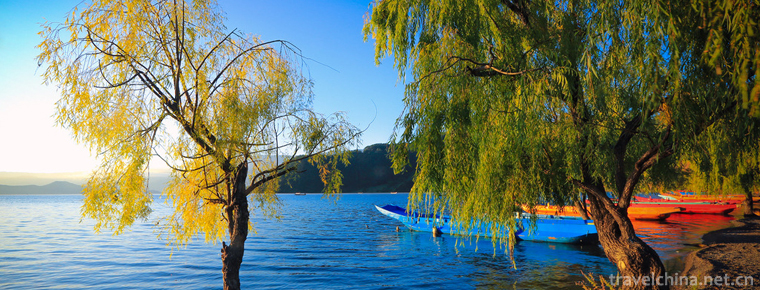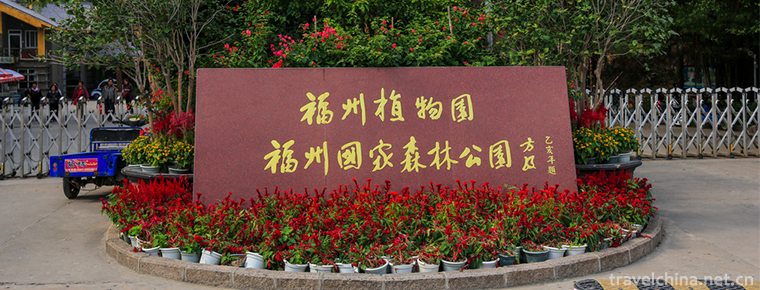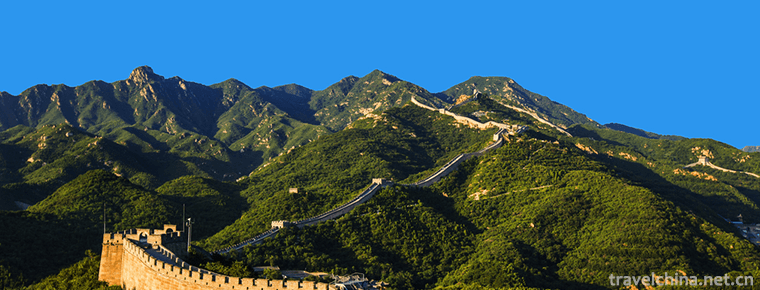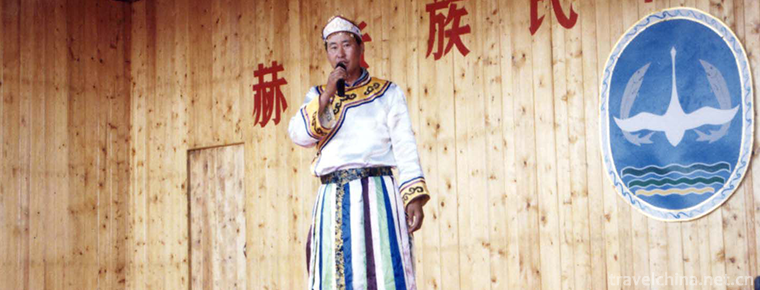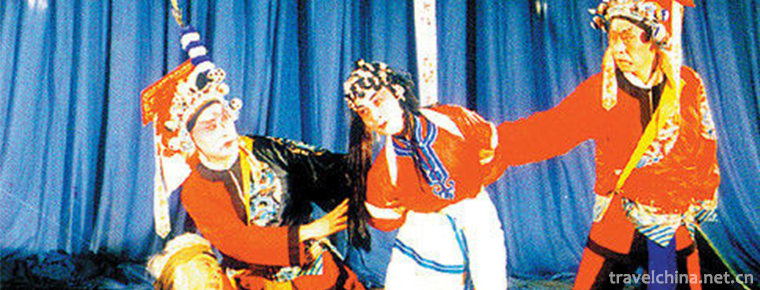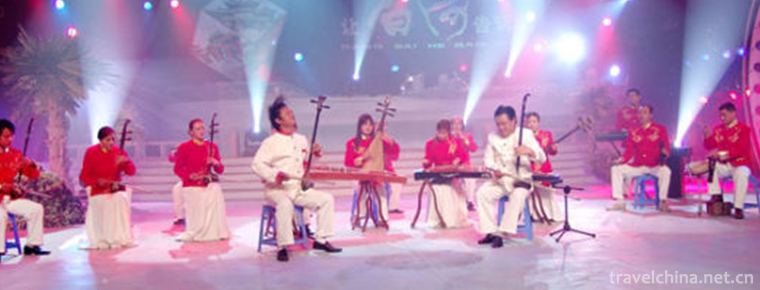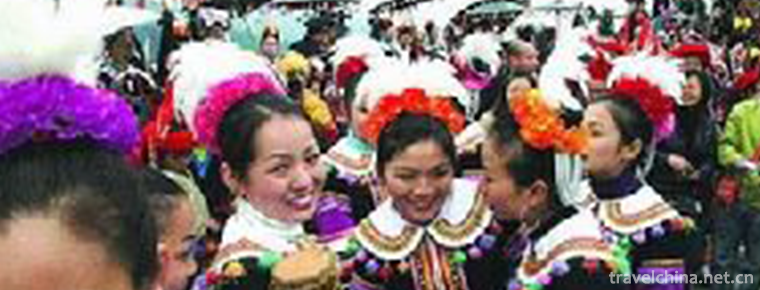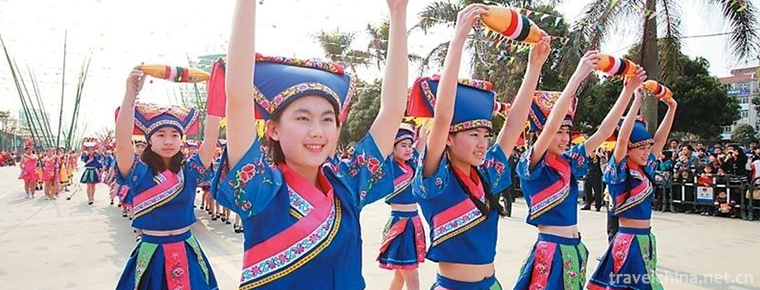A tune of mountain climbing
A tune of mountain climbing
Mountain climbing tune, also known as mountain climbing song and mountain song, is a traditional short-tune folk song popular in the agricultural and semi-agricultural and semi-pastoral areas of central and Western Inner Mongolia, which can be divided into back mountain tune, Front Mountain tune and Hetao tune. Houshan tune is popular in the northern foot of Yinshan Mountain, with long melody and large interval beating; Hetao tune is popular in Hetao area of Bayannuer City, with beautiful melody and delicate feelings; Qianshan tune is mainly popular in the Tummet Plain, which is characterized by both the length of Houshan tune and Hetao tune. The structure of the mountain climbing tune is similar to Xintianyou and Shanqu, mostly consisting of two single phrases, while the tune is influenced by the blending of the Han and Mongolian nationalities.
On June 7, 2008, the mountain climbing survey was approved by the State Council and listed in the second batch of national intangible cultural heritage list.
historical origin
It is understood that since the Ming and Qing Dynasties, a large number of immigrants have moved from Shanxi, Hebei, Shandong, Shaanxi and other areas, bringing with them the culture and art of their homeland. On the basis of the integration of Hebei folk songs, Shanxi Dayangge, Shandong Express Board Books and Shanbei Xintianyou vocabulary and form, they have absorbed some elements of Mongolian long tune, thus producing a mountain climbing tune with local artistic style. The mountain climbing tune, which is popular in Wuchuan County, is characterized by its long melody, large interval beating, and its singing style is divided into indoor and outdoor.
artistic characteristics
The music of mountain climbing tune is mostly high and rugged. Its tunes are often named after its popular areas, such as "Hetao Tune", "Houtao Tune", "Tumochuan Tune", "Daqingshan Tune", "Yimeng Tune" and "Helu Tune". The structure of the song is short and changeable. The basic structure of the song is composed of eight sections of the above two phrases. Most of the two phrases are changeable and repetitive, and some even completely invariable. In order to enhance performance, it often uses lining, stacking or slowing down the pace, broadening the rhythm and other techniques, so that the length of the sentence is extended and the structure is expanded. Some tunes are over a dozen bars long, while others turn a sentence into two sentences and develop into a structure of change with the nature of a Fuyue paragraph.
The tunes of mountain climbing tune are mostly five tones or six tones, followed by Shang and feather tunes. The melody and rhythm of the song vary from place to place. Generally speaking, mountain-climbing tunes (such as Hetao tune and Tumochuan tune) which are popular in plain areas have more symmetrical and regular rhythm, smaller fluctuation, narrow range, smooth and gentle tone, while mountain-climbing tunes (such as Back Hill Tune) which are popular in mountain areas have more free and changeable rhythm, more melodic jumps, big fluctuations, wide range, high and upright tone, and enthusiastic.
Its rhythm is more regular, the rhythm is more fixed, the sentence pattern is a typical sentence structure, the number of words per sentence is different, which constitutes the characteristics of this short-tune folk song, simple but not rigid, clangorous and frustrated sentences. In rhythm, the free prolongation of tenor is used more, and in melody, the big jump is used more. The tune of the first half of the upper and lower sentences is the same, only the second half of the sentences changes.
Its tune is often named after its popular area. The structure of the song is short and changeable. The passage composed of eight subsections of the two sentences above and below is its basic structure form. Most of the two phrases are changeable and repetitive, and some even completely invariable. In order to enhance performance, it often uses lining, stacking or slowing down the pace, broadening the rhythm and other techniques, so that the length of the sentence is extended and the structure is expanded. Some tunes are over a dozen bars long, while others turn a sentence into two sentences and develop into a structure of change with the nature of a Fuyue paragraph. The tunes of mountain climbing tune are mostly five tones or six tones, followed by five tones and feather tones. The rhythm of hill-climbing tune (such as back hill tune) is free and changeable. The tune has many jumps, big fluctuations, wide range, high and straight tone, open and unrestrained.
Because the western Inner Mongolia and the northwest of Shanxi are adjacent to each other, the mountain-climbing tune popular in the western Inner Mongolia is closely related to the mountain-qu popular in the northwest of Shanxi. The tune of Mongolian folk songs is often included in the mountain climbing tune of the mixed Mongolian and Han areas in this area.
Mountain climbing tune often uses such techniques as comparison and exaggeration. The most commendable is the improvisation of the singer. He sings whatever he thinks of, what he sees, where he goes, and what he sings is symmetrical and rhymed. The Lyric language is mostly vernacular reduplication words, which is particularly cordial and vivid, with a smart and humorous artistic style, moving heart, and strong mountain flavor.
The simple and plain mountain climbing style is not only the natural expression of the working people's voice in the northern Saibei area, but also a mirror of the social history, the life of the times and the local conditions and customs in this area. Words are filled with people's feelings and love, with its strong local flavor and soil breath to maintain its vigorous vitality.
Representative Works
The grandmother held her brother with firewood.
This is a mountain climbing tune in Western Inner Mongolia. From West to east, there are more than a thousand miles of Yinshan Mountains. Under the foothills, Mongolian and Han people work in agriculture and animal husbandry in their own ways, and form their own music traditions. The "mountain climbing tune" is mainly sung by the Han people. Because of the differences in the spreading areas and singing styles, it can be divided into "front mountain tune" and "back mountain tune". The spread of Qianshan Diao is mainly in Bayannaoer League and Ikezhao League. Its tone is influenced by Mongolian long tone, and its melody stretches for a long time. The spread scope of "Houshan Dialect" is centered on Wuchuan of Ulan Chabu League, also known as "Wuchuan Dialect". It is generally the structure of upper and lower sentences. The JUMP-in tone type is more common in the tone, with a high and bold style and a strong wild atmosphere. On the whole, the lyrics of northern love songs are more straightforward and clear, while those of Southern love songs are more implicit. But there are many examples to the contrary. Such as this song, it expresses the feelings of the girl, it is much more implicit, let us immediately think of Sichuan's "When does the Sophora Blossom Blossom?" "Yangpo (refers to the sun) burns a fire when it falls, because she pushes the firewood to her elder brother." The background is clear, the theme is clear, and the action is strong, but there is no straightforward saying; "Seeing the village without a person, see the smoke and dust on the smokestack" is more implicit, only Noda village and smoking silent smokestack, people and scenery melt into a slightly sad scene; "Red Danyang Po Lanyin" In the clouds, my brother's tears were not seen. The contrast between the beauty of the scenery and the gloom of the mood profoundly showed the protagonist's near despair. This is a "expectation map" that fills every corner with emotion. Its generality, profundity and vividness have reached a high level. The tune is a typical upper and lower sentence structure. Both sentences are wide, long and singing. The general trend of the two phrases is from high to low. Especially in the first sentence, crown sounds appear at the beginning of the two phrases, which seem to gather a great push force, and then gradually "release". The JUMP-in pattern at the end of the sentence seems to deliberately "push" onto the feather sound to form an urgent "half" termination, which is a common technique of "mountain climbing tune". Long-term singing practice makes singers have a kind of "intuitive feeling": in terms of the response relationship between the upper and lower sentences, the main tone and its upper fifth degree are the most tensive. Therefore, in the upper and lower sentences folk songs in Northwest China, the fifth degree relationship is the most common, and the second is the fourth or other intervals.
Researcher
Liu Wenzhong, a member of Inner Mongolia Writers Association, a member of China Network Literature Association, an educational researcher and a famous writer and poet, has made a lot of research on mountain climbing tune, Ertai and Shanqu. There are many studies on the origin and development of mountain climbing tune. Especially, the ten abuses and ten love in Errentai have been systematically studied, and the mountain climbing tune is called "Hetao Book of Songs". The main works are Errentai in Hetao area, Mountain Climbing Tune, Tamping Song, Magic Curse, Poetry Collection, Plough Dream, Lighting Heart Lamp and more than ten collections, Prose Collection, Yangjia River Bank, etc.
Inheritance Significance
The theme of mountain climbing tune is very extensive and all-embracing. The main content is to reflect the life, thoughts and feelings, national and local folk customs, customs and human feelings of the working people in the local rural pastoral areas. Most of the expressions use metaphors, symbols, analogies, associations, repetitions, overlaps and exaggerations to convey their feelings. The lyrics are rich in local flavor and belong to authentic original ecological art. However, in recent years, with the rise of popular culture, the mountain climbing tune has been severely impacted, especially the death of Zhang Eryinhu and other older singers, which makes the mountain climbing tune singers in Wuchuan County appear green and yellow. In order to inherit, protect and excavate this intangible cultural heritage, Wuchuan County, with the strong support of the higher authorities, has invested a lot of manpower and material resources. Sports departments have gone to the grass-roots level for many times to select and counsel folk singers, and held a grand prix for two consecutive years with the Hushi Cultural Bureau. A number of excellent singers such as Wusanjun and Liang Laoyou have been excavated, which laid a solid foundation for the excavation, sorting, collection and inheritance of mountain climbing tunes.
Relevant Records
In 1953, a group of 27 teachers and students from the Central Conservatory of Music went to Wuyuan County to collect more than 2,000 folk songs (mostly mountain-climbing tunes).
In 1954, Han Yanru, a famous folk writer, went to Hetao area to collect a large number of mountain climbing tunes and compiled the album "Mountain climbing tunes" for publication.
In 1959, thousands of Great Leap Forward Folk Songs (mainly mountain climbing tunes) were collected in various banners and counties, and were compiled and printed into "Selected Folk Songs of Great Leap Forward" by cultural centers and other units.
In 1977, with the support of the party and government leaders, Li Shujun, the former flag of Urat, traveled all over the countryside and pastoral areas around Wuyuan. After five years of hard work, I visited more than 200 folk singers and collected more than 10,000 pieces of Shanqu songs.
In July 1982, the collected Shanqu Er was printed in a leaded volume by Wulat Qianqi Wenlian, and more than 1800 pieces of mountain climbing tunes were selected.
In 2010, Liu Wenzhong collected and collated the Hetao Book of Songs, published by Hetao Literature and Art, and published articles such as "Mountain Climbing Tune and Two-stage Tamping Songs" in newspapers and periodicals. The mountain climbing tune was quoted extensively in the novel "Magic Curse".
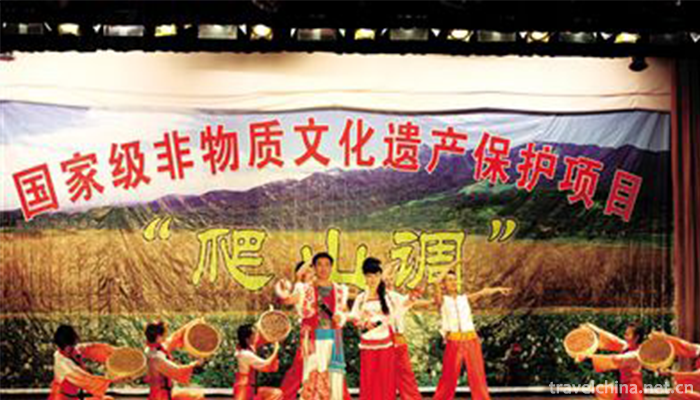
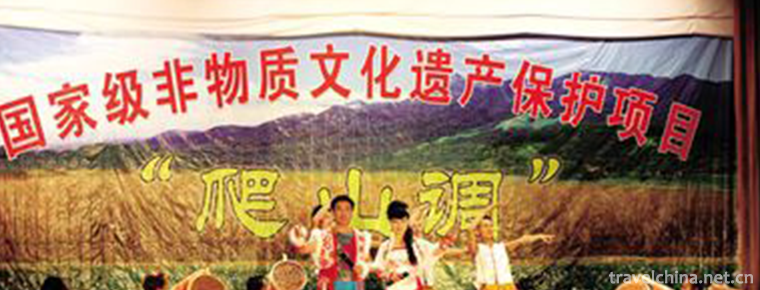
A tune of mountain climbing
-
Lugu Lake
Lugu Lake, commonly known as Zuozuohai, the ancient name Lede Sea
Views: 142 Time 2018-10-17 -
Pineapple Sweet and Sour Pork
Gu Lu meat, also known as the ancient meat. It is a special dish in Guangdong. This dish dates back to the Qing Dynasty. At that time, many foreigners in the city of Guangzhou
Views: 174 Time 2018-11-02 -
Fuzhou national forest park
Fuzhou National Forest Park (also known as "Fuzhou Botanical Garden") is the first National Forest Park in Fujian Province, one of the ten National Forest parks, and one of the six 4A scenic
Views: 189 Time 2019-01-12 -
Xue Xiang Snow Township
Snow Township, the full name of "China Snow Township National Forest Park", is located in Changting Town, Hailin City, Mudanjiang City, Heilongjiang Province, China, and belongs to the Dahai
Views: 225 Time 2019-02-27 -
The Site of the Ancient Great Wall of the Warring States Period
When people mention the Great Wall, they will think of the Great Wall from Shanhaiguan to Jiayuguan. However, in Xilingol League, there are also the ancient Great Wall, which is not as famous as the G
Views: 192 Time 2019-03-09 -
Imakan of Hezhe Nationality
Imakan is a unique rap art of the Hezhe people in Northeast China. Its performance form is a combination of one person's rap and singing. It has no accompaniment with musical instruments and uses the
Views: 228 Time 2019-05-03 -
Qingyang Opera
During Jiajing period of Ming Dynasty, Yiyang Tune of Jiangxi flowed into Qingyang County of Chizhou Prefecture in Southern Anhui Province. It was combined with local language, folk opera (Kunshan Tun
Views: 182 Time 2019-06-11 -
Xiping Folk Song
Xiping Folk Song is a traditional folk song in Xiping Town, Xixia County, Nanyang City. Xiping Town, located in the hinterland of Funiu Mountain in Western Henan Province, is located in the combinatio
Views: 259 Time 2019-07-01 -
Yao Peoples Playing Hall
The Playing Hall is a folk grand gathering of memorizing ancestors, recalling history, celebrating harvest, rewarding vows, disseminating knowledge and mass entertainment activities in Liannan Paiyao.
Views: 309 Time 2019-07-11 -
Song pool of the Zhuang nationality
Song pool of the Zhuang nationality is a form of Festival gathering and singing activities held by the masses of the Zhuang nationality at a specific time and place.
Views: 313 Time 2019-08-16 -
Wuliangye distillery
Wuliangye Group Co., Ltd. is located at the intersection of Jinsha River and Minjiang River, the first city of the Yangtze River -- "Jiudu" Yibin. It is a modern corporate group with Wuliangye series liquor production as its main business
Views: 340 Time 2020-10-16

